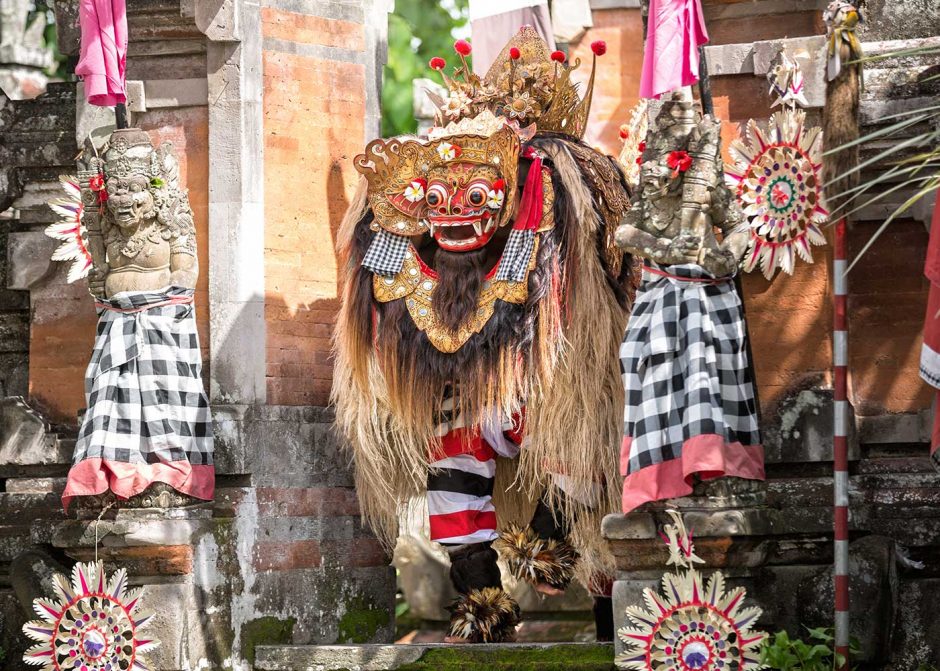Among the kaleidoscope of visuals that greets visitors to Bali, there’s a recurring motif called poleng that you’d have to lock yourself in your hotel room to miss.
It’s everywhere – girdling tree trunks and mossy stone statues, spread on restaurant tables, adorning worshippers at temple ceremonies a monochrome checkerboard pattern known as poleng. And it’s more than mere decoration – poleng is one of the clearest expressions of the unique worldview of the Balinese.
They may call Bali the Island of the Gods, but the tiny Hindu enclave in the heart of the Indonesian archipelago is as filled with demons as it is divinities. In fact, Balinese beliefs are a heady homegrown blend of animism, Hinduism, Buddhism and ancestor worship. At their heart lies a philosophy called Rwa Bhineda, which describes the world in terms of complimentary opposites – large-small, young-old, good-evil. The island’s elaborate ceremonies are largely about maintaining balance between good & evil. You don’t try and defeat the demons, you appease them with offerings. Poleng expresses this philosophy of inseparable opposites, but it’s not just a symbol either.
For the Balinese poleng is a kind of magic – it acts as a barrier between objects that have a strong mystical ‘charge.’ A tree or statue wrapped in poleng is likely home to a powerful spirit. Bali’s village guards, the pecalang, also wear poleng which reflects their role in protecting the community.
The origins of poleng aren’t entirely clear, but it’s at least as old as the Hindu Majapahit Empire, the Javanese civilization that ruled the Malay Archipelago from the end of the 13th century until the early 1500s. It’s possibly even older – an animist artefact the Majapahit culture assimilated.
It can take a month to make a metre of poleng, if it’s handwoven in the traditional manner. And if you look closely at the pattern, you realise it isn’t in fact black & white – there are grey squares too. And because the blend of black and white threads is slightly different depending on whether the warp or weft of the thread is on top, there are in fact four shades in total.
Besides its mystical properties, poleng is perhaps also a reminder to live ethically. Respect the inhabitants of the unseen realm – i.e. ‘live ethically’ and you embody the white squares of the cloth and the converse is true of the black. The reality of course is that most of us occupy one or other of the grey squares!

Recent Comments